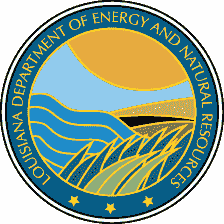| Ground Water Emergency Order Update Date: May 10, 2013 Notice from DENR Office of Conservation, Commissioner James Welsh |
|
On August 19, 2011, the Office of Conservation declared a temporary ground water emergency for two areas of South Caddo Parish due to exceptional drought conditions resulting in higher than normal withdrawal of ground water without sufficient offsetting aquifer recharge. These conditions resulted in ground water levels in the Carrizo-Wilcox and Upland Terrace aquifers dropping to levels which caused several shallower water wells in the two areas to go dry at the end of July 2011. To prevent further water level decline and reduce stress on the aquifers in these two areas, Conservation ordered water conservation measures and ground water use restrictions. Details are provided in the August 2011 Memorandum and Emergency Order No. ENV-2011-GW014. Since issuance of the Emergency Order, Conservation staff has continued to monitor hydrologic data in the region provided to our agency courtesy of the LSU Shreveport Red River Watershed Management Institute and from the United States Geological Survey (USGS) starting in September 2011. Water level data collected from the LSU-Shreveport monitoring wells located in the Areas of Interest indicate that water levels have shown recovery in all wells since June 2012. Water level data from additional observation wells measured and reported by the United States Geological Survey (USGS) from November 2011 through April 2013 generally reports near similar conditions as seen with the LSU-Shreveport monitor wells, i.e., water levels gradually receded through August 2012 from their respective high water level marks recorded in April 2012, with a gradual increasing trend through March 2013. Results of USGS observation well water levels can be viewed here and below. U. S. Drought Monitor Reports for Louisiana dated May 7, 2013 reported conditions in the areas to be "abnormally dry". The current U.S. Drought Monitor Report for Louisiana may be viewed here. The Louisiana Office of State Climatology rainfall data for the area south of Shreveport indicates monthly rainfall totals for June through October 2011 to be well below respective average monthly rainfall with the month of October 2011 reported to be 65% below the monthly average. The rainfall total for the month of November 2011 was reported to be within 9% of the monthly average and continued improvement was noted for December 2011 with a 73% increase of rainfall above the normal average. Rainfall in the area has generally improved from summer and fall 2011 rainfall totals to date. January 2013 measured rainfall was approximately 3% the average rainfall for the area, however both February, March, and April 2013 measured rainfall totals fall below each month's historic average. Since November 2011 to present, measured rainfall in the area is trending nearly consistent with the same monthly average trend shown on the graph at the link provided below. In summary, rainfall and groundwater levels have all improved during January 2013, however, rainfall during February, March and April 2013 has been reported to be less than the respective monthly rainfall averages for the area. Based on hydrologic and groundwater level results reported and evaluated during the past 18 months, the increase in groundwater levels throughout the areas of interest during January and February 2013 was expected as evidenced by similar conditions and data results reported during last winter. As also evident with past data, in the absence of any significant abnormal environmental condition(s), groundwater levels are expected to again decrease during the spring and summer. This cyclical water level rise and fall, or seasonal variation, is normal for aquifer systems such as the Carrizo-Wilcox and Upland Terrace where the volumetric groundwater use is dominated by public supply and domestic purposes. Considering aquifer characteristics and predominate use, water consumption generally trends upward during months with greater hours of daylight and warmer temperatures compared with months with fewer daylight hours and cooler temperatures. The greatest uncertainty for the area is the amount of rainfall, or lack thereof, hence the possibility of the return of drought conditions in the region. Considering that rainfall averages during the past three months have fallen below respective averages and the northwest region of the state is now listed as "abnormally dry", the agency has determined that all restrictions and conditions set forth in the Emergency Order shall remain in full effect. |
